Guest post written by José María Castrillón Montes from ACCIONA Construction
Innovation is not a new concept. It is a process through which, through a particular action, an element is transformed to give it another use or improve the one it was originally designed for. In the field of civil engineering, innovation become an attitude.
In this article we will describe how the discipline has evolved, comparing five civil engineering innovations that the Romans introduced 2,000 years ago following the same criteria as those used nowadays.
ROADS
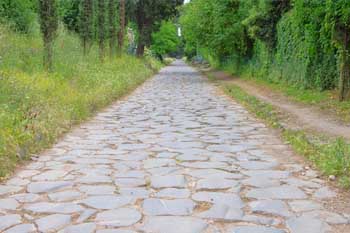
The Romans built a sophisticated system of roads to ensure the management of conquered territory. They did so by combining earth, gravel and bricks made of granite or volcanic lava. They ended up building over 50,000 kilometres, and like on modern roads there were signs and signals telling travellers the distance to their destination.
Innovation in the field of transport infrastructure, and specifically roads, leads us to the notion of ‘smart roads': roads that use photosensitive paint for road markings that can be seen regardless of the weather, generating symbols on the road surface, roads that allow energy to be generated, and to be able to recharge batteries while driving a vehicle.
LOWERED ROMAN ARCH
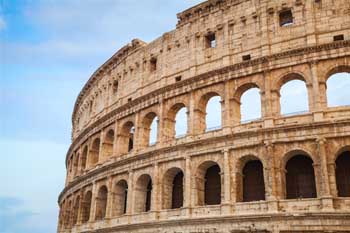
Arches have existed for 4,000 years as structural elements, but it was the Roman engineers who were the first to make efficient use of their resistant properties. They realised it was not necessary to cover a whole space at once and divided the arch into several smaller sections, flattening the shape to create a lowered arch and repeat it at intervals to create stronger supports that could cross long spans. Indeed, the arch became one of the elements that defines the Roman architectural style.
In this case, a similar comparison takes us to Porto (northern Portugal), and specifically to the Infante D. Henrique Bridge, a clear example of the concept of the arch taken to the extreme. The bridge has a very slender polygonal arch whose main span, made of post-tensioned reinforced concrete, has a clear arch of 280 metres and is 1.50 m thick. Despite the arch’s appearance, the structure really works as a gantry bridge. The rise of this supposed arch is 25 m, so it has a rise/span ratio of 11.2, a world record of its type. The bridge was built by Acciona Infrastructure in 2002.
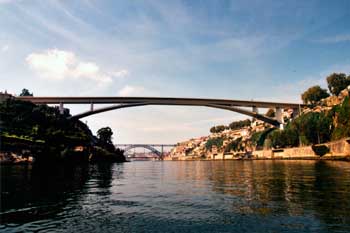
If you would like to get to know more projects by ACCIONA Infrastructure: ACCIONA Infrastructure.
CONCRETE
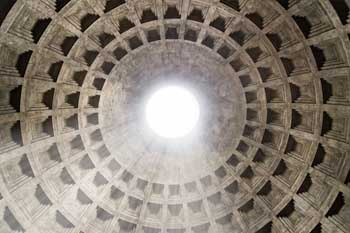
The Romans were the first to make and use a concrete (opus caementicium) consisting of a mixture of gravel with lime, sand and water. Far from resembling modern-day concretes, they offered a highly valuable characteristic if they added volcanic earth to the mixture in the right proportions: the mix could harden under water.
One of the most singular innovations achieved with this material is its self-healing properties. The self-healing is achieved through the inclusion, in the mix, of materials that include a bacteria that remains latent and is only activated when a crack appears, generating calcite (calcium carbonate). This fills the holes created by the fissure, and the concrete not only recovers its appearance but also its resistant capacity.
AQUEDUCTS
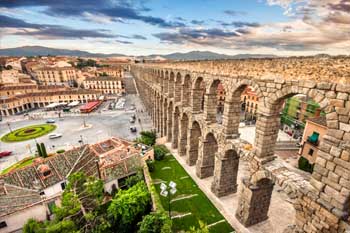
The Romans enjoyed a number of comforts such as public baths and toilets and a sewerage system. These were possible thanks to aqueducts, which transported water by the force of gravity. Although they were not the first to use them, they did innovate and improve their functioning and construction, to such an extent that some are still working today.
In this case, the innovation lies in the transport of fresh water to coastal towns or to islands with low reserves. The novelty lies in the development of a modular system of containers that were towed to their destination by boats, called ‘XXL-Refresh’. The containers have a series of sensors that monitor the stresses borne by the modules in real time, allowing the tug to adjust its navigation. This form of transport is more economical and sustainable for the environment than using tanker vessels.
FLOATING BRIDGES
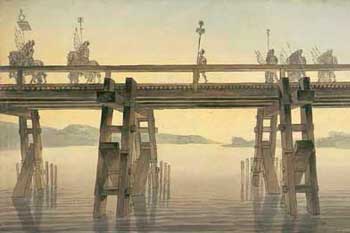
In many respects, Roman engineering is synonymous for military engineering. Floating bridges (pontoons) were mostly designed and constructed during wartime, and were a speciality of Julius Caesar. In 55 CB he built a 400-metre-long pontoon to cross the river Rhine. The construction of a floating bridge without diverting the flow of the river is very difficult, and it needs to be done quickly and accurately.
Here the innovation lies in the 3D printer. Julius Caesar could print his bridge and continue sending his legions marching across Europe. The 3D printer is considered by the European Space Agency as the outstanding invention of the third industrial revolution, as the steam engine and the internal combustion engine were in their day. The variety of objects that can be printed with a 3D printer nowadays is infinite and it can be applied to practically all the fields of science (medicine, automotive, engineering, etc.). It would even allow us to compete in 'Master Chef' because we could even print out food!
As we have seen, civil engineering has been - and will continue to be - a key factor in the development of the human race. Civil engineers have been, are, and will be continually looking for new and specific components and materials for construction, improving building and management process as they go along. In this search they will combine economic and optimisation criteria (strength and durability) with minimal environmental impact (pollution during manufacture and use, and the end of the element’s working life) by making the best use of natural resources and minimising waste. Basically, seeking sustainability.
José María Castrillón Montes
Technical Project Manager. Marketing and Communication Department. ACCIONA Construction
Twitter profile: @JM_castrillon